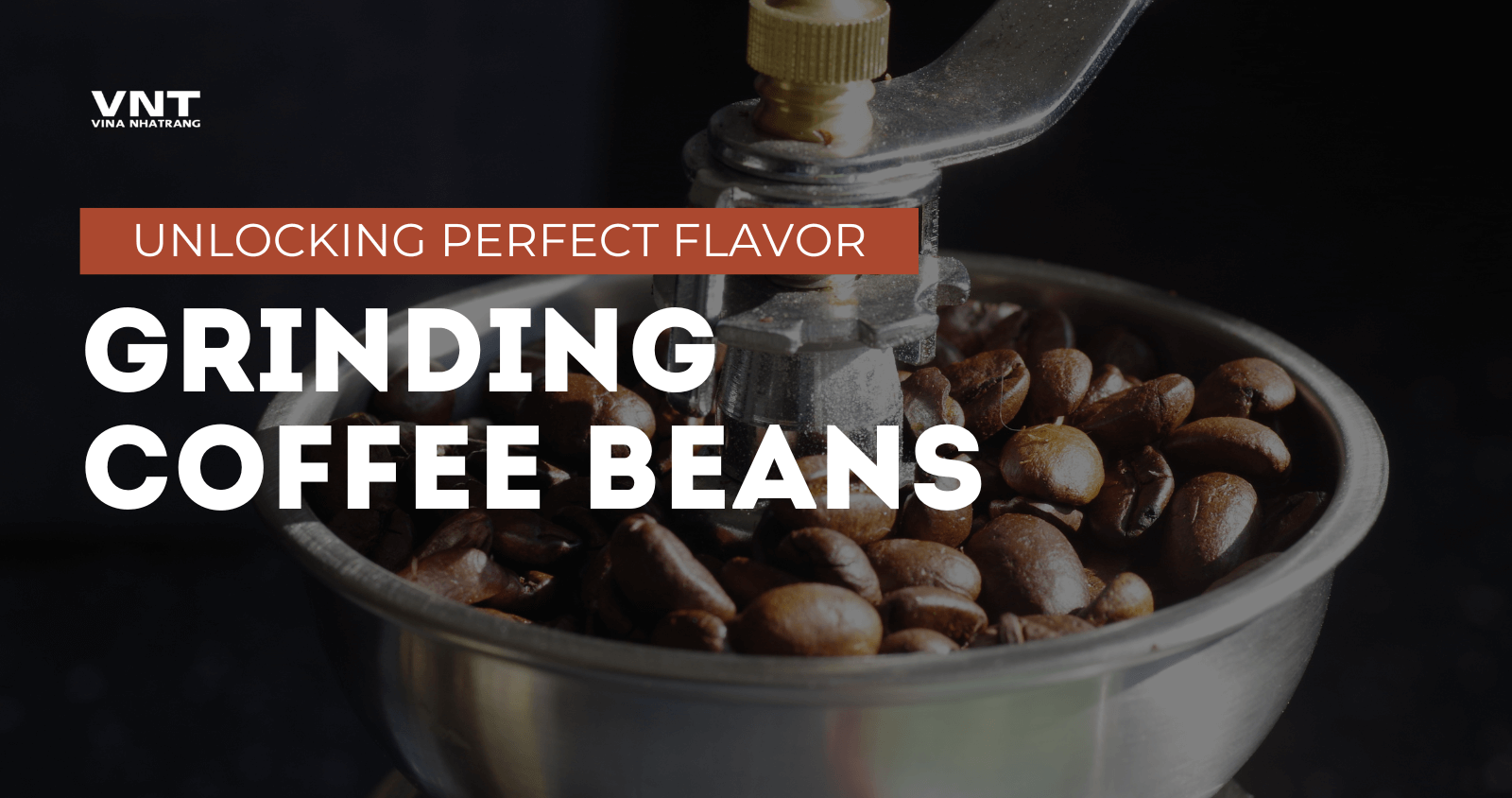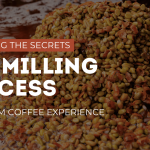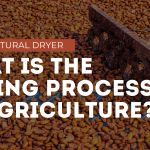Are you ready to elevate your coffee game? Whether you’re a seasoned barista or just starting your journey into the world of specialty coffee, understanding the art and science of grinding coffee beans is crucial. In this comprehensive guide, we’ll explore everything you need to know about grinding coffee to achieve that perfect cup every time.
I. Introduction: The Gateway to Great Coffee
Picture this: You’ve just purchased a bag of premium, freshly roasted coffee beans. The aroma is intoxicating, promising a delightful brewing experience. But here’s the catch – those whole beans are just potential energy waiting to be unlocked. The key to releasing their full flavor? Proper grinding.
Grinding coffee isn’t just about breaking beans into smaller pieces. It’s about creating the ideal surface area for water to interact with the coffee, extracting the perfect balance of flavors, aromas, and oils. Get it right, and you’re rewarded with a cup of coffee that sings with complexity and depth. Get it wrong, and you might end up with a brew that’s either disappointingly bland or unpleasantly bitter.
Different brewing methods – from the slow, steeping process of a French press to the high-pressure extraction of espresso – demand different grind sizes. It’s this interplay between grind size and brewing method that allows us to coax out the best characteristics from any coffee bean.
So, are you ready to dive into the world of coffee grinding? Let’s begin our journey to unlocking the full potential of your coffee beans!
II. The Importance of Grinding Coffee Beans
A. Why Freshly Ground Coffee is Better
Have you ever wondered why coffee shops grind beans to order? It’s not just for show – there’s real science behind it. When coffee beans are ground, they begin to lose their aromatic compounds and oils almost immediately. This process, called oxidation, is the same reason why a sliced apple turns brown when left out.
Freshly ground coffee preserves these volatile compounds, resulting in a cup that’s noticeably more flavorful and aromatic. The difference between pre-ground and freshly ground coffee is like the difference between a reheated meal and one that’s freshly cooked – both might be edible, but one is undeniably superior.
Consider this: pre-ground coffee might sit on a shelf for weeks or even months before it reaches your cup. During this time, it’s constantly losing flavor. By grinding your beans just before brewing, you’re ensuring that you capture every nuance the roaster intended you to experience.
B. How Grinding Affects Coffee Extraction
Now, let’s talk about extraction – the process where water pulls flavors and oils from the coffee grounds. The size of your coffee grounds plays a crucial role in how this extraction unfolds.
Think of coffee grounds like different sizes of rocks in a river. Water flows quickly around large boulders, barely interacting with them. This is similar to what happens with coffee grounds that are too coarse – you get under-extraction, resulting in a weak, sour brew. On the other hand, imagine a riverbed full of fine sand. Water moves slowly, picking up everything in its path. This is akin to coffee grounds that are too fine, leading to over-extraction and a bitter, harsh taste.
The goal is to find the sweet spot – a grind size that allows water to extract the perfect amount of flavor compounds in the time allotted by your brewing method. This balance is what creates a cup of coffee that’s rich, complex, and satisfying.
III. Types of Coffee Grinders
When it comes to grinding coffee, not all tools are created equal. Let’s explore the main types of grinders available and how they impact your coffee:
A. Blade Grinders vs. Burr Grinders
Blade Grinders
Blade grinders are the most common and affordable option you’ll find in many households. They work like a blender, using a spinning blade to chop the coffee beans into smaller pieces. While they get the job done, they have some significant drawbacks:
- Inconsistency: The beans closest to the blade get ground more finely than those further away, resulting in a mix of fine powder and larger chunks.
- Heat generation: The fast-spinning blades can generate heat, which can affect the flavor of your coffee.
- Lack of control: It’s challenging to achieve a specific grind size consistently with a blade grinder.
Burr Grinders
On the other hand, burr grinders are the preferred choice for coffee enthusiasts and professionals. They use two revolving abrasive surfaces (called burrs) to grind the coffee beans a few at a time. Here’s why they’re superior:
- Consistency: Burr grinders produce uniform grounds, which is crucial for even extraction.
- Temperature control: They generate less heat, preserving the coffee’s flavor.
- Precision: You can adjust the distance between the burrs to achieve exact grind sizes for different brewing methods.
While burr grinders are more expensive, the improvement in coffee quality is noticeable. If you’re serious about your coffee, a burr grinder is a worthwhile investment.
B. Manual Grinders vs. Electric Grinders
Now that we understand the superiority of burr grinders, let’s compare manual and electric options:
Manual Grinders
Pros:
- Portable and great for travel
- No electricity needed
- Often more affordable than electric burr grinders
- Can be a meditative part of your coffee ritual
Cons:
- Require physical effort, especially for larger quantities
- Can be time-consuming
Electric Grinders
Pros:
- Convenient and fast
- Can grind larger quantities easily
- Often have more precise grind settings
Cons:
- More expensive
- Require electricity
- Can be noisy
The choice between manual and electric often comes down to personal preference, budget, and how much coffee you typically brew.
C. Specialty Grinders for Espresso
If you’re an espresso lover, you might want to consider a grinder specifically designed for this brewing method. Espresso requires an extremely fine and consistent grind, and not all grinders are up to the task.
Espresso-specific grinders often have:
- Stepless adjustment for minute changes in grind size
- Powerful motors to handle the fine grinding
- Dosing features for consistent portafilter filling
While these grinders are often more expensive, they’re essential for achieving that perfect espresso shot with a rich crema.
IV. Grind Sizes for Different Brewing Methods
One of the most crucial aspects of grinding coffee is matching the grind size to your brewing method. Let’s break down the main grind sizes and their ideal brewing applications:
A. Coarse Grind (French Press, Cold Brew)
Texture: Think sea salt or raw sugar Ideal for: French Press, Cold Brew, Percolator
A coarse grind is perfect for brewing methods that involve long steeping times. The large particles allow for slow extraction, preventing over-extraction and bitterness.
For French Press, the coarse grind allows the metal filter to easily separate the grounds from the liquid, resulting in a full-bodied cup with a rich mouthfeel. With cold brew, the coarse grind facilitates a smooth, less acidic concentrate perfect for iced coffee drinks.
B. Medium-Coarse Grind (Chemex, Clever Dripper)
Texture: Similar to coarse sand Ideal for: Chemex, Clever Dripper, Cafe Solo
This grind size strikes a balance between extraction and flow rate, making it perfect for pour-over methods that use thicker filters or have longer contact times.
For a Chemex, the medium-coarse grind allows for a slower extraction, highlighting the coffee’s clarity and subtle flavors. The Clever Dripper, which combines immersion and drip brewing, benefits from this grind size to achieve a well-balanced cup.
C. Medium Grind (Drip Coffee, Aeropress)
Texture: Like regular sand Ideal for: Drip Coffee Makers, Aeropress (with standard brewing), Siphon Brewers
The most versatile grind size, medium grind works well with a variety of brewing methods. It’s the standard for most home coffee makers.
For drip coffee, this grind size allows for optimal extraction as the water passes through the grounds. When using an Aeropress with the standard method (not inverted), a medium grind provides enough resistance for proper extraction without making the plunge too difficult.
D. Fine Grind (Espresso)
Texture: Slightly finer than table salt Ideal for: Espresso Machines, Moka Pot
The fine grind is crucial for espresso brewing. It creates the necessary resistance for the high-pressure water to extract the full range of flavors in a short time.
For espresso machines, this grind allows for the creation of that sought-after crema and a full-bodied shot. When using a Moka Pot, the fine grind helps build up the pressure needed for proper extraction, resulting in a strong, espresso-like brew.
Remember, these are starting points. The perfect grind size can vary depending on your specific beans, equipment, and personal taste preferences. Don’t be afraid to experiment and fine-tune your grind to achieve your ideal cup!
V. Step-by-Step Guide to Grinding Coffee Beans
Now that we understand the importance of grind size, let’s walk through the process of grinding coffee beans:
A. How to Measure Coffee Beans
Consistency is key to brewing great coffee, and it starts with accurate measurement. While you can measure by volume (using scoops), measuring by weight is far more precise. Here’s why:
- Coffee beans vary in density based on origin, roast level, and age.
- Whole beans take up more volume than ground coffee.
Invest in a digital kitchen scale that measures in grams. A general starting point is 1:16 ratio of coffee to water (e.g., 15g of coffee for 240ml of water), but you can adjust based on your preferences.
B. Adjusting the Grinder for the Right Size
Whether you’re using a manual or electric grinder, here’s how to dial in the right grind size:
- Consult your grinder’s manual for guidance on settings.
- Start with the middle setting and adjust from there.
- For burr grinders, adjust the distance between the burrs:
- Closer together = finer grind
- Further apart = coarser grind
- Make small adjustments and test until you achieve the desired consistency.
Remember, you might need to recalibrate when switching between different coffee beans or roast levels.
C. Step-by-Step Grinding Process
- Measure out your desired amount of whole beans.
- If using an electric grinder, ensure it’s clean and dry.
- Pour the beans into the grinder’s hopper.
- Select your grind size based on your brewing method.
- For manual grinders, start cranking! For electric grinders, start the machine.
- Grind only what you need for immediate brewing to preserve freshness.
- If your grinder doesn’t have a grounds container, grind directly into your brewing device’s filter.
- Check the consistency of your grounds. They should be uniform in size.
D. Alternative Methods to Grind Coffee Without a Grinder
Don’t have a grinder? No problem! Here are some alternative methods:
- Mortar and Pestle: Great for small amounts. Crush beans in a circular motion.
- Rolling Pin: Place beans in a plastic bag and crush them on a cutting board.
- Blender: Use the pulse setting to avoid overheating. Tilt the blender while grinding to ensure even results.
- Hammer: Similar to the rolling pin method, but use gentle taps to crush the beans.
While these methods won’t provide the consistency of a good grinder, they can work in a pinch!
VI. Common Grinding Mistakes and How to Avoid Them
Even with the best intentions, it’s easy to make mistakes when grinding coffee. Here are some common pitfalls and how to avoid them:
A. Over-Grinding and Heat Damage
Problem: Grinding for too long, especially with blade grinders, can generate heat that damages the coffee’s flavor compounds.
Solution:
- Use a burr grinder if possible.
- If using a blade grinder, pulse in short bursts and shake the grinder between pulses.
- Only grind what you need for immediate use.
B. Inconsistent Grind Sizes
Problem: Uneven grind sizes lead to uneven extraction, resulting in a cup that’s simultaneously under and over-extracted.
Solution:
- Invest in a quality burr grinder.
- Regularly clean and maintain your grinder.
- If using a blade grinder, shake it while grinding to encourage even grinding.
C. Failing to Clean the Grinder
Problem: Old coffee residue can go rancid and taint the flavor of freshly ground beans.
Solution:
- Clean your grinder regularly (weekly for daily users).
- For burr grinders, disassemble and brush out the burrs.
- For blade grinders, grind a small amount of uncooked rice to absorb oils, then wipe clean.
Remember, a clean grinder is crucial for maintaining the quality and flavor of your coffee!
VII. Storing Coffee Beans for Optimal Freshness
Proper storage is crucial for maintaining the quality of your coffee beans, which directly impacts the grinding process and final brew.
A. Best Practices for Storing Beans
- Airtight Containers: Use containers that seal tightly to prevent air exposure.
- Cool, Dark Place: Store away from heat sources and direct sunlight.
- Avoid Moisture: Keep beans away from areas with high humidity.
- Buy Whole Beans: They stay fresh longer than pre-ground coffee.
- Purchase in Small Batches: Buy only what you can use within 2-4 weeks.
Avoid storing beans in the refrigerator or freezer, as temperature fluctuations can cause condensation and affect flavor.
B. The Impact of Bean Freshness on Grinding
As coffee beans age, they lose moisture and become more brittle. This can affect how they grind:
- Fresher beans might require a slightly coarser grind setting.
- Older beans might need a finer setting to achieve the same extraction.
Pay attention to how your coffee tastes and adjust your grind accordingly as your beans age. If you notice a significant change in flavor or grind consistency, it might be time for a fresh batch of beans.
VIII. Conclusion
Congratulations! You’ve now embarked on a journey through the intricate world of coffee grinding. From understanding the crucial role that grinding plays in flavor extraction to mastering the art of selecting the right grind size for your preferred brewing method, you’re well on your way to becoming a home barista extraordinaire.
Remember, the perfect grind is a combination of science and art. While we’ve provided guidelines, don’t be afraid to experiment and trust your taste buds. Every coffee bean is unique, and part of the joy of home brewing is discovering the nuances that make each cup special.
Investing in a quality burr grinder can dramatically improve your coffee experience. If you’re looking to take your coffee game to the next level, consider exploring Industrial Coffee Mill options for consistent, high-quality grinds.
We encourage you to put your new knowledge into practice. Start by paying attention to your grind size and how it affects your brew. Experiment with different settings and brewing methods. Most importantly, enjoy the process! There’s nothing quite like the aroma of freshly ground coffee to start your day on the right note.
What’s your next step in your coffee journey? Will you be investing in a new grinder, trying out a different brewing method, or simply paying more attention to your grind size? Whatever you choose, remember that every cup is an opportunity to learn and refine your skills.
Happy grinding, and may your next cup of coffee be your best yet!




